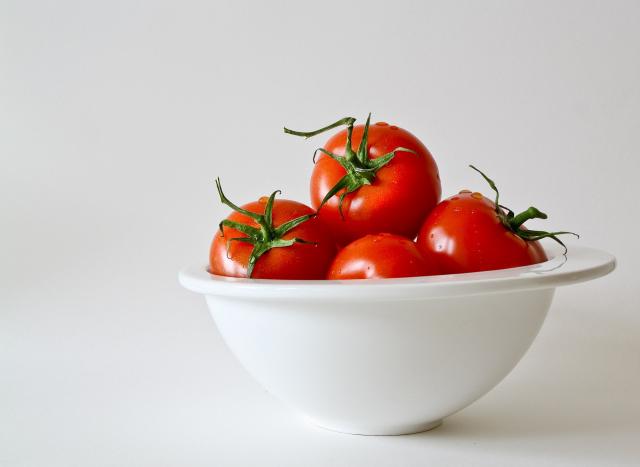About This Lesson
Introduction
Tomatoes are one of those special foods that give our food that uniquely splendid taste. With the arrival of the winter season, we'll be eating tomatoes in just about everything, from pasta to BLTs and yes that most famous soothing tomato soup to warm our bodies from the cold, and cure to our winter blues.
Tomatoes are one of the most popular staples grown in home gardens, these hearty fruits are used in ketchup, pasta sauces, Mexican cuisines, soups, salads, and more. According to Lori Vanover, “Modern tomatoes grow up to 100 times larger than the tiny ones first cultivated by Andean people thousands of years ago”. The first harvests of tomatoes were known to be yellow and cherry-sized.
History of Tomatoes
Because the origins of tomatoes can be traced back to the early Aztecs around 700 A.D, tomatoes are believed to be an American native fruit. Considered to be poisonous during the colonial times, tomatoes were grown and used solely for decorations. Later it was understood that the pewter plates that were used then contained high traces of lead, combined with the acid from the tomatoes which leached lead from the plate, would cause many lead associated deaths.
According to K. Annabelle Smith, “The tomato didn’t get blamed for what was lead poisoning. Before the fruit made its way to the table in North America, it was classified as a deadly nightshade, a poisonous family of Solanaceae plants that contain toxins called tropane alkaloids”. Although tomatoes have been classified as a poisonous beautiful plant in its earliest history, tomatoes are now known to be one of the most popular vegetables in America and enjoyed by millions all over the world today.
Things You Didn’t Know About Tomatoes
People from all over the world visit Bunol Spain to participate in the world’s well known biggest food fight called La Tomatina. According to tradition Tens of thousands of participants come from all over the world to fight in a harmless battle where more than one hundred metric tons of over-ripe tomatoes are thrown in the streets.
Although tomatoes are considered America’s native fruit, today China is known to be the world’s biggest producers of tomatoes. According to Sen Nag, Oishimaya, “In 2017, the worldwide production of tomatoes totaled 170.8 million tons. China, the leading producer of tomatoes, accounted for 31% of the total production”.
Another rare thing about tomatoes most people are not familiar with is the fact that tomatoes are not supposed to be refrigerated. According to Alison Spigel,” The cold air in the fridge stops the tomatoes from ripening, and ripening is what gives tomatoes more flavor. The cold temperature will also alter the texture of the tomato, breaking down the membranes inside the fruit walls and turning it mealy.
Word to the wise: keep your tomatoes out on the counter if you want them to taste good and retain their wonderful texture”. Another good idea for cooking with tomatoes that some people are not familiar with is if you deseed tomatoes before cooking it will prevent that bitter taste in your dish that tomato seeds give, especially when making pasta sauces.
Conclusion
To get the best outcome when cooking tomatoes, it is best not to cook them in an aluminum pot or use aluminum utensils. Using aluminum pots and utensils will cause the absorption of some of the aluminum and the acid in the tomatoes, giving your dish a very bitter acidic taste.
To reduce some of the acids in the tomatoes, and bring its flavors out more, try using a sprinkle of sugar and salt. Tomatoes are used as an additive to several recipes throughout the world and are loved by billions of people. When cooking with tomatoes, it is best to understand what you cook them with. Too much acid can cause indigestion, heartburn and other digestive discomforts.












